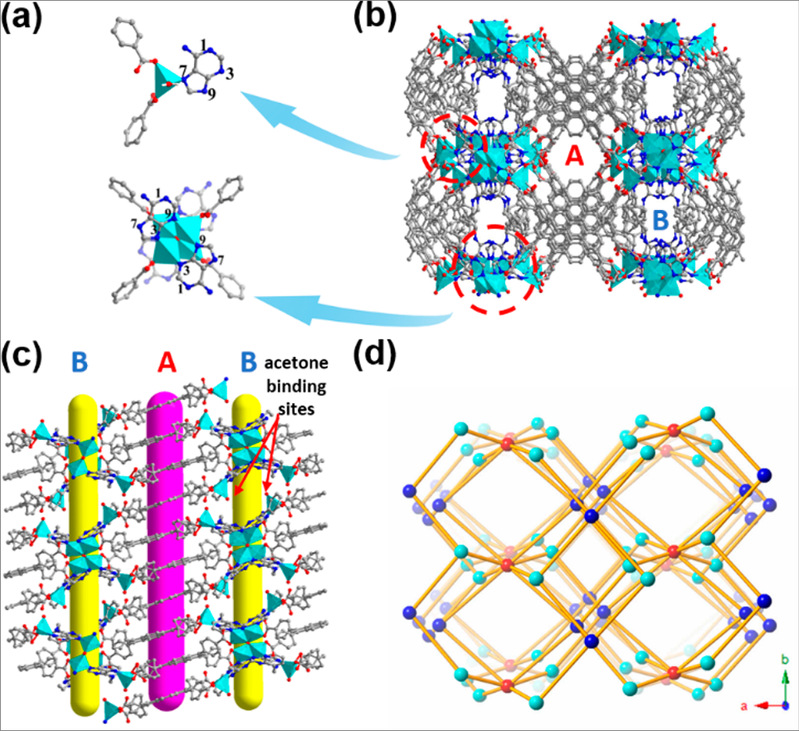
Yong-Liang Huang, Pei-Li Qiu, Jian-Ping Bai, Dong Luo, Weigang Lu,* and Dan Li*

Astract: An anionic microporous metal-organic framework (1), featuring a combination of mononuclear and tetranuclear zinc clusters and a mix-and-match strategy of two different types of organic ligands, has been successfully constructed via a solvothermal reaction. Its luminescence can be exclusively quenched by acetone. In situ single-crystal X-ray diffraction studies reveal the specific acetone binding sites and the existence of multiple hydrogen bonds between acetone and the framework. Together with its chemical and thermal stability, 1 has been demonstrated to be a potential luminescence probe for the rapid detection of acetone with a remarkable anti-interference and a low detection limit (1.85 ppm).




